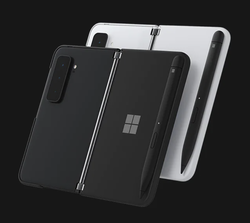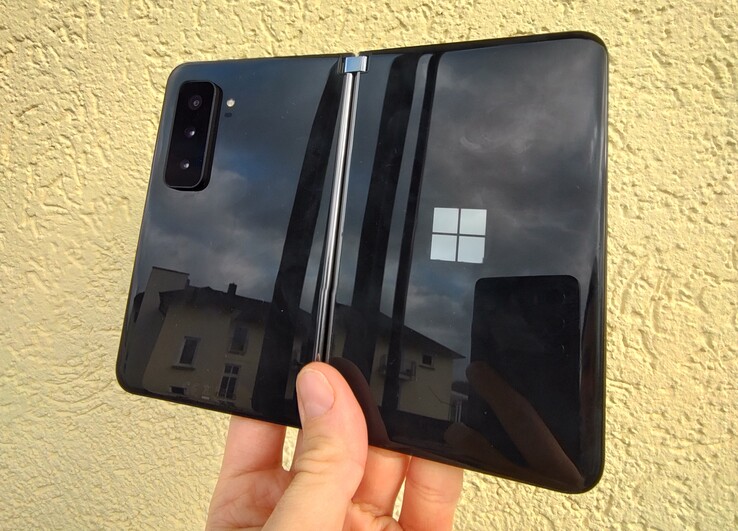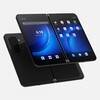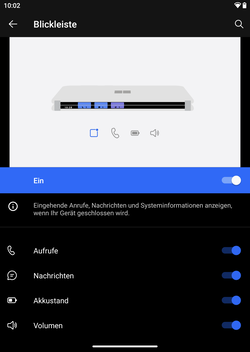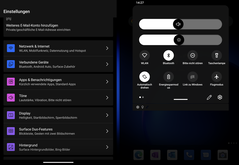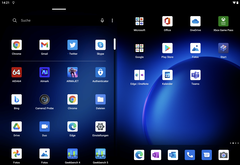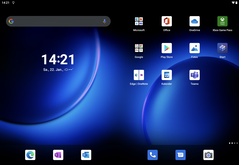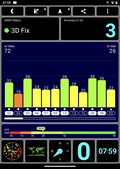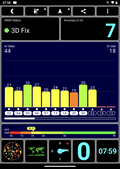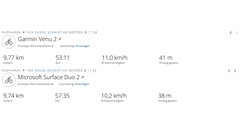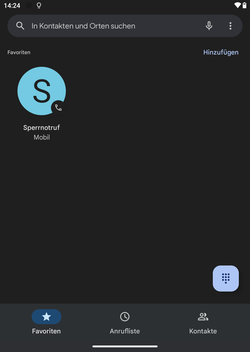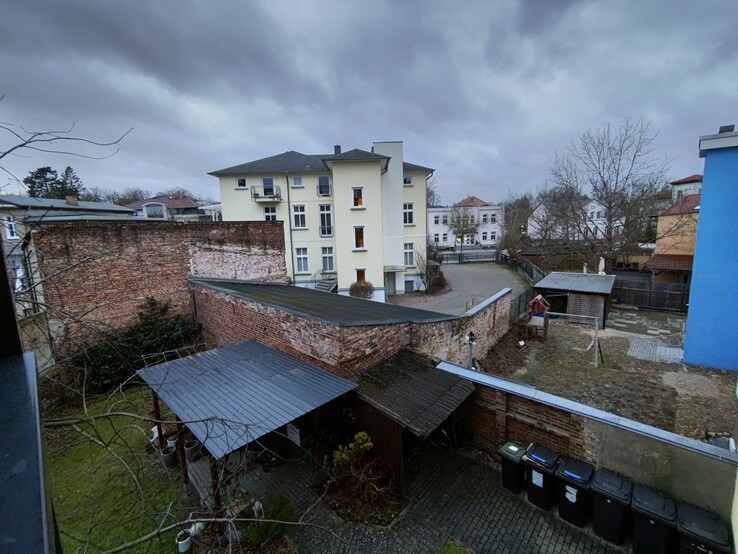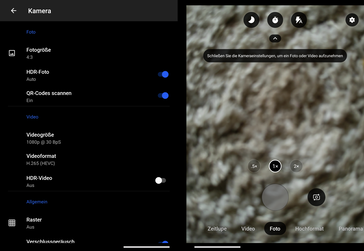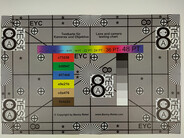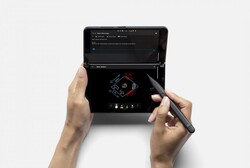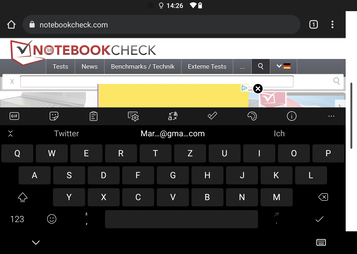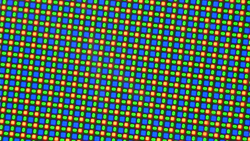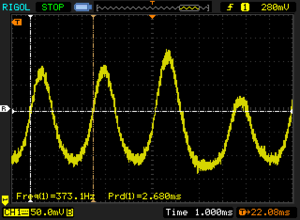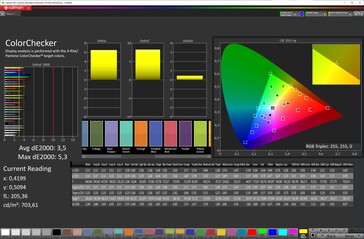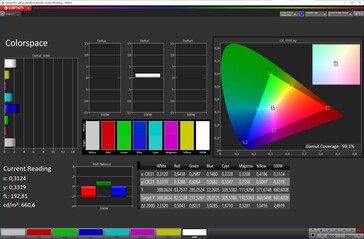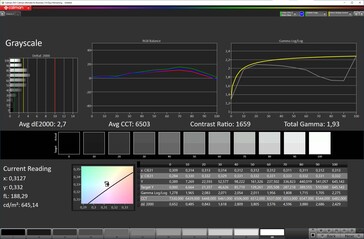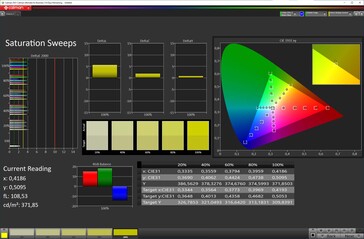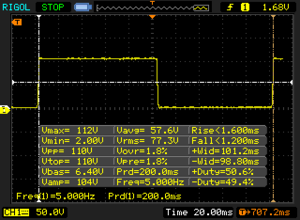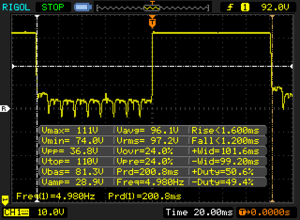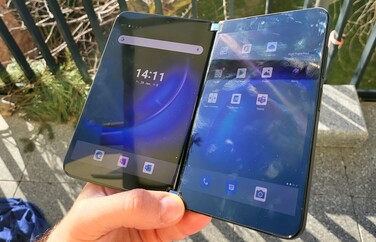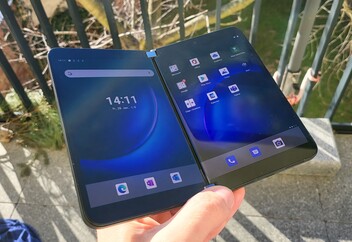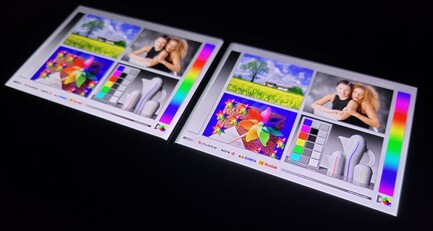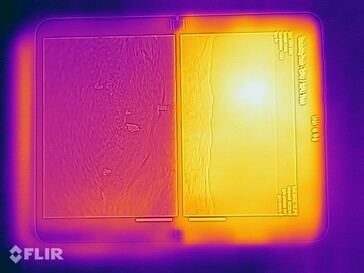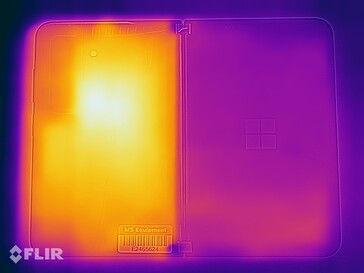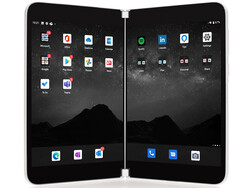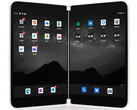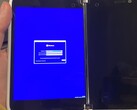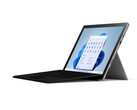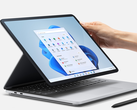Microsoft Surface Duo 2 review - Great but still immature smartphone concept
With the Surface Duo 2, the technology behemoth that is Microsoft still has a different interpretation of the foldable category than the remainder of the smartphone industry. Unlike the Galaxy Z Fold3, which relies on a foldable dynamic AMOLED display, the Duo 2 is based on two "traditional" PixelSense touch displays.
The second-generation Snapdragon 888 smartphone comes with a 4K triple cam on the back as well as 5G support. Thanks to its 4449-mAh battery, the Surface Duo 2 is supposed to make it through an entire day and its configurations include 8 GB of RAM and 128 GB, 256 GB, or 512 GB of internal storage at an MSRP starting from 1500 USD.
Potential Competitors in Comparison
Rating | Date | Model | Weight | Drive | Size | Resolution | Price |
|---|---|---|---|---|---|---|---|
| 84.3 % v7 (old) | 02 / 2022 | Microsoft Surface Duo 2 SD 888 5G, Adreno 660 | 284 g | 256 GB UFS 3.1 Flash | 8.30" | 2688x1892 | |
| 88.9 % v7 (old) | 09 / 2021 | Samsung Galaxy Z Fold3 5G SD 888 5G, Adreno 660 | 271 g | 256 GB UFS 3.1 Flash | 7.60" | 2208x1768 | |
| 82.6 % v7 (old) | 04 / 2020 | Huawei Mate Xs Kirin 990 5G, Mali-G76 MP16 | 300 g | 512 GB UFS 3.0 Flash | 8.00" | 2480x2200 | |
| 89.2 % v7 (old) | 06 / 2021 | Xiaomi Mi 11 Ultra SD 888 5G, Adreno 660 | 234 g | 256 GB UFS 3.1 Flash | 6.81" | 3200x1440 | |
| 88.6 % v7 (old) | 06 / 2022 | OnePlus 9 Pro SD 888 5G, Adreno 660 | 197 g | 256 GB UFS 3.1 Flash | 6.70" | 3216x1440 |
Case - Thin Microsoft Phone
The case of the Surface Duo 2, which aside from the familiar, white "Glacier" design now also comes in a dark "Obisidian" color, is very thin with a premium feel. However, the plastic frame that protects the curved displays does not mesh well with the otherwise high-quality impression.
Although compared to the previous model, the PixelSense touch displays have increased in size from 5.6 inches to 5.8 inches, the bezels are still fairly large. At least, the inefficient screen-to-body ratio of about 78 % means that the dual-screen smartphone does not have to resort to a hole-punch camera or notch.
Both the inside as well as the outside of the phone, which weighs 284 grams (~0.63 lbs), is protected by Corning Gorilla Glass Victus. While the Duo 2 appears robust, it is neither water- nor dustproof. In this category, the Galaxy Z Fold3 is ahead of the Surface smartphone thanks to its IPX8 certification.
Connectivity - Surface Duo 2 Supports DisplayPort
The Surface Duo 2 can be charged via a type-C port on the bottom edge of the device, which supports USB 3.2 Gen. 2 and peripherals via an OTG adapter. Additionally, the Microsoft smartphone is able to output 4K video to an external monitor over an HDMI adapter using the DisplayPort standard. An appropriate DisplayPort-capable USB-C-to-HDMI cable is not included, however. In the wireless category, the Duo 2 supports Chromecast and Miracast. Since the Microsoft smartphone (naturally) does not have an always-on display, the manufacturer has integrated a notification bar into the second generation of its Duo series, which is visible when the phone is folded up. This allows the curved displays to function as a battery indicator or notify users of calls and messages. Unfortunately, third-party applications are not supported at this time, which severely limits its use.
Software - Microsoft Smartphone without Windows
Instead of Microsoft's own operating system, Windows, the Duo 2 comes with a UI that is based on Android 11 with security patches from January 2021 at the time of this review. There is no official information on how long the Redmond technology company plans on supporting its foldable with software updates. What we do know is that following its release in September 2020, the Duo 2's predecessor was still running Android 10 up until recently. According to reports, Microsoft wants to skip the Android 12 update for its foldable phones and instead focus on Android 12L, a special Android version that is tailored towards phablets and tablets.
The user interface includes some well-designed features such as app groups, a dual-screen window option and a visually appealing Microsoft 365 feed. That being said, the software could use some more optimization and only a few apps have been optimized for dual-screen use.
Communikation and GNSS - Surface Duo 2 with Wi-Fi 6
For the communications modules, Microsoft opts for Bluetooth 5.1 and NFC. Thanks to its support for Wi-Fi 6 homenetworks and the fast ax standard, the Duo 2 achieves very fast transfer rates of up to 1700 Mbps. The transfer rates in combination with our new reference router Asus ROG Rapture GT-AXE11000 could have been more consistent, however.
On top of 5G and several Sub-6 frequencies, the Duo 2 also supports a total of 26 LTE bands. Due to the high number of supported 4G frequencies, users not only benefit from great coverage domestically, but also while traveling.
| Networking | |
| iperf3 transmit AX12 | |
| Samsung Galaxy Z Fold3 5G | |
| Xiaomi Mi 11 Ultra | |
| OnePlus 9 Pro | |
| Huawei Mate Xs | |
| iperf3 receive AX12 | |
| Huawei Mate Xs | |
| Samsung Galaxy Z Fold3 5G | |
| OnePlus 9 Pro | |
| Xiaomi Mi 11 Ultra | |
| iperf3 receive AXE11000 | |
| Microsoft Surface Duo 2 | |
| Average of class Smartphone (52 - 1721, n=177, last 2 years) | |
| iperf3 transmit AXE11000 | |
| Microsoft Surface Duo 2 | |
| Average of class Smartphone (49.8 - 1828, n=177, last 2 years) | |
In order to examine the precision of the GPS, we take our Duo 2 with us on a short trip. At the end of our 10-km (~6.2 miles) test track, the difference between the smartphone's GPS module and our Garmin Venu 2 reference device amounts to only 30 meters. (~98.4 ft).
Geolocation does not always work flawlessly and parts of the recorded track deviate from the actual route. Overall, the Duo 2 is still a good choice for navigation tasks.
Telephony and Call Quality - Microsoft Phone with eSIM
The call quality is somewhat subpar. While voices are captured clearly thanks to the dual microphones with echo and noise suppression, we have to speak very loudly in order for them to pick us up at all. During our testing, video calls via the integrated display camera with Skype only supported the single-screen mode. When using both screens, video transmission was not possible.
The card slot of the Surface phone accepts Nano SIM cards. Furthermore, an eSIM is also supported. According to the manufacturer, both can be used in parallel for dual SIM functionality.
Cameras - Surface Duo 2 with a Triple Cam
In terms of the cameras, Microsoft has made big changes. While the predecessor did not have a rear camera module at all, the Duo 2 supports a 2x optical zoom thanks to the 12-MP telephoto lens with OIS and ultra-wide shots thanks to its 16-MP ultra-wide lens. Unfortunately, neither were able to produce convincing results due to a lack of details.
The main camera also has a resolution of 12 MP and an optical image stabilization. While the image quality under daylight is good, the degree of sharpness could have been higher. Interestingly, the right side of the images turned out to be noticeably sharper than the left side. When it comes to the color accuracy, Microsoft still has some work left to do on the software side - particularly in terms of the color balance and green shades.
Pictures taken with 12-MP camera on the inside are somewhat lackluster in when it comes to the sharpness, although the dynamic range and brightening in daylight are quite good.
Image comparison
Choose a scene and navigate within the first image. One click changes the position on touchscreens. One click on the zoomed-in image opens the original in a new window. The first image shows the scaled photograph of the test device.
WeitwinkelWeitwinkelLow LightUltraweitwinkelZoom 5x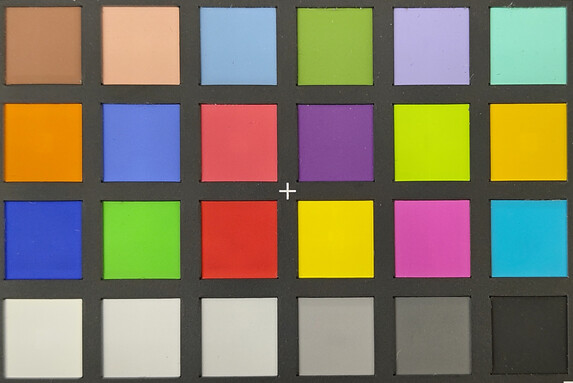
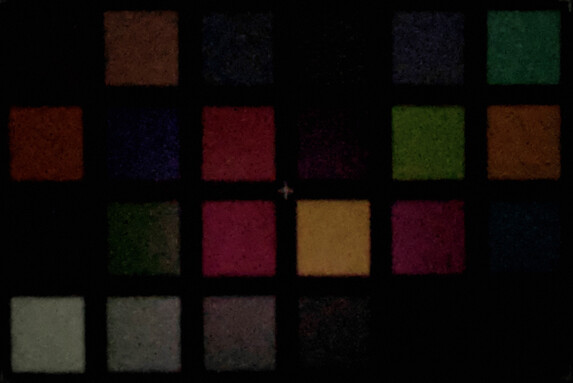
Accessories and Warranty - Microsoft Smartphone without Charger
While the Surface Duo 2 comes without the 23-watt power supply (available separately, MSRP: 45 USD), a USB cable and USB type-C earbuds are included. The Surface Slim Pen 2 is optionally available at an MSRP of 130 USD.
Microsoft only offers a 12-month warranty starting from the time of purchase. Users have the option to buy an accidental damages and downtime protection plan called Microsoft Complete for Surface.
Input Devices & Handling - Surface Duo 2 without Face Unlock
The capacitive PixelSense touchscreens respond precisely, but not always reliably to inputs. Occasionally, our inputs seem to get lost on the first try, which we suspect is caused by Microsoft's software impementation rather than hardware issues. The gliding properties of the Corning Gorilla Glass are excellent.
The 90-Hz refresh rate of the screen enhances the user experience with smoother animations and scrolling. Combined with the new Surface Pen 2 and its haptic motor, the faster refresh rate allows for comfortable writing and sketching. That being said, the Galaxy Z Fold3 and its S-Pen feel more responsive and more sensitive.
The power button has an integrated fingerprint sensor with a high recognition rate for biometric security. Facial recognition is not supported on the Duo 2.
Display - Microsoft Smartphone with an OLED Screen
The two 90-Hz AMOLED displays of the Duo 2 have a resolution of 1344 x 1892 pixels and an aspect ratio of 13:9, which is unusual for a smartphone. This results in a pixel density of around 400 PPI for each screen. When opened, the Surface model offers a display diagonal of 8.3 inches, which is interrupted by the hinge in the center.
The manufacturer promises a maximum luminance of 600 nits. In the auto brightness mode with the ambient light sensor enabled, we measured slightly more than that at up to 663 nits on a pure white background. Similarly, the result of the more realistic APL50 test is good as well at 814 nits. The Surface smartphone uses pulse-width modulation (PWM) with a high frequency of 194-373 Hz to control the brightness to up to 30 %. At higher brightness levels, we measured a frequency of 90 Hz, although the fluctuations in the amplitude diagram are much less severe. There is no DC dimming mode.
| |||||||||||||||||||||||||
Brightness Distribution: 98 %
Center on Battery: 663 cd/m²
Contrast: ∞:1 (Black: 0 cd/m²)
ΔE ColorChecker Calman: 3.5 | ∀{0.5-29.43 Ø4.78}
ΔE Greyscale Calman: 2.7 | ∀{0.09-98 Ø5}
99.1% sRGB (Calman 2D)
Gamma: 1.93
CCT: 6503 K
| Microsoft Surface Duo 2 AMOLED, 2688x1892, 8.3" | Samsung Galaxy Z Fold3 5G Dynamic AMOLED, 2208x1768, 7.6" | Huawei Mate Xs OLED, 2480x2200, 8" | Xiaomi Mi 11 Ultra AMOLED, 3200x1440, 6.8" | OnePlus 9 Pro AMOLED, 3216x1440, 6.7" | |
|---|---|---|---|---|---|
| Screen | 15% | -11% | 33% | 33% | |
| Brightness middle (cd/m²) | 663 | 808 22% | 417 -37% | 891 34% | 733 11% |
| Brightness (cd/m²) | 661 | 820 24% | 418 -37% | 888 34% | 746 13% |
| Brightness Distribution (%) | 98 | 97 -1% | 99 1% | 99 1% | 97 -1% |
| Black Level * (cd/m²) | |||||
| Colorchecker dE 2000 * | 3.5 | 2.9 17% | 2.6 26% | 1.9 46% | 0.95 73% |
| Colorchecker dE 2000 max. * | 5.3 | 4.2 21% | 7.7 -45% | 3.7 30% | 2.01 62% |
| Greyscale dE 2000 * | 2.7 | 2.5 7% | 2 26% | 1.3 52% | 1.7 37% |
| Gamma | 1.93 114% | 2.01 109% | 2.31 95% | 2.3 96% | 2.21 100% |
| CCT | 6503 100% | 6359 102% | 6276 104% | 6527 100% | 6591 99% |
* ... smaller is better
Screen Flickering / PWM (Pulse-Width Modulation)
| Screen flickering / PWM detected | 373.1 Hz | ||
The display backlight flickers at 373.1 Hz (worst case, e.g., utilizing PWM) . The frequency of 373.1 Hz is relatively high, so most users sensitive to PWM should not notice any flickering. However, there are reports that some users are still sensitive to PWM at 500 Hz and above, so be aware. In comparison: 53 % of all tested devices do not use PWM to dim the display. If PWM was detected, an average of 8101 (minimum: 5 - maximum: 343500) Hz was measured. | |||
The analysis with our spectrophotometer and the CalMAN software shows fairly low deltaE color devations for the Duo 2 compared to the sRGB color space (profile: natural) - the ideal range would be values of <3. Similarly, the color temperature of 6503 K almost exactly matches the ideal of 6500 K.
Display Response Times
| ↔ Response Time Black to White | ||
|---|---|---|
| 2.8 ms ... rise ↗ and fall ↘ combined | ↗ 1.6 ms rise | |
| ↘ 1.2 ms fall | ||
| The screen shows very fast response rates in our tests and should be very well suited for fast-paced gaming. In comparison, all tested devices range from 0.1 (minimum) to 240 (maximum) ms. » 12 % of all devices are better. This means that the measured response time is better than the average of all tested devices (20.2 ms). | ||
| ↔ Response Time 50% Grey to 80% Grey | ||
| 2.8 ms ... rise ↗ and fall ↘ combined | ↗ 1.6 ms rise | |
| ↘ 1.2 ms fall | ||
| The screen shows very fast response rates in our tests and should be very well suited for fast-paced gaming. In comparison, all tested devices range from 0.165 (minimum) to 636 (maximum) ms. » 11 % of all devices are better. This means that the measured response time is better than the average of all tested devices (31.6 ms). | ||
Performance - Microsoft Phone with a Qualcomm SoC
The 2021 high-end Qualcomm chipset makes the Surface phone a great performer. The overall system performance is good for the most part, although slight stuttering frequently occurs.
The results of benchmarking the Snapdragon 888 match our very high expectations and the browser benchmarks in particular seem to favor the Duo 2. We were also pleased with the fast read and write speeds of the UFS 3.1 storage.
| AImark - Score v2.x (sort by value) | |
| Microsoft Surface Duo 2 | |
| Samsung Galaxy Z Fold3 5G | |
| Xiaomi Mi 11 Ultra | |
| Average Qualcomm Snapdragon 888 5G (171404 - 264766, n=15) | |
| JetStream 1.1 - Total Score | |
| Microsoft Surface Duo 2 (Chrome 97) | |
| Average Qualcomm Snapdragon 888 5G (77 - 223, n=19) | |
| Xiaomi Mi 11 Ultra (Chrome91) | |
| Samsung Galaxy Z Fold3 5G (Chrome 92) | |
| OnePlus 9 Pro (Microsoft Edge 46) | |
| Huawei Mate Xs (Huawei Browser 10.1) | |
| WebXPRT 3 - Overall | |
| Average of class Smartphone (38 - 380, n=31, last 2 years) | |
| Microsoft Surface Duo 2 (Chrome 97) | |
| Samsung Galaxy Z Fold3 5G (Chrome 92) | |
| Average Qualcomm Snapdragon 888 5G (103 - 182, n=18) | |
| Xiaomi Mi 11 Ultra (Chrome91) | |
| OnePlus 9 Pro (Microsoft Edge 4689) | |
| Huawei Mate Xs (Huawei Browser 10.1) | |
| Octane V2 - Total Score | |
| Average of class Smartphone (2228 - 121337, n=197, last 2 years) | |
| Microsoft Surface Duo 2 | |
| Average Qualcomm Snapdragon 888 5G (23491 - 47543, n=20) | |
| Xiaomi Mi 11 Ultra (Chrome91) | |
| Samsung Galaxy Z Fold3 5G (Chrome 92) | |
| OnePlus 9 Pro (Microsoft Edge 46) | |
| Huawei Mate Xs (Huawei Browser 10.1) | |
| Mozilla Kraken 1.1 - Total | |
| Huawei Mate Xs (Huawei Browser 10.1) | |
| OnePlus 9 Pro (Microsoft Edge 46) | |
| Xiaomi Mi 11 Ultra (Chrome91) | |
| Average Qualcomm Snapdragon 888 5G (891 - 1841, n=20) | |
| Average of class Smartphone (257 - 28190, n=154, last 2 years) | |
| Samsung Galaxy Z Fold3 5G (Chrome 92) | |
| Microsoft Surface Duo 2 (Chrome 97) | |
* ... smaller is better
| Microsoft Surface Duo 2 | Samsung Galaxy Z Fold3 5G | Huawei Mate Xs | Xiaomi Mi 11 Ultra | OnePlus 9 Pro | Average 256 GB UFS 3.1 Flash | Average of class Smartphone | |
|---|---|---|---|---|---|---|---|
| AndroBench 3-5 | -14% | -25% | -1% | -5% | 14% | 44% | |
| Sequential Read 256KB (MB/s) | 1818 | 1934 6% | 1767 -3% | 1928 6% | 1995 10% | 1757 ? -3% | 2228 ? 23% |
| Sequential Write 256KB (MB/s) | 754 | 790 5% | 402.7 -47% | 756 0% | 769 2% | 1204 ? 60% | 1852 ? 146% |
| Random Read 4KB (MB/s) | 287.1 | 215.5 -25% | 202.9 -29% | 259.3 -10% | 258.7 -10% | 287 ? 0% | 296 ? 3% |
| Random Write 4KB (MB/s) | 324.7 | 195.7 -40% | 259.1 -20% | 329.7 2% | 254.3 -22% | 318 ? -2% | 339 ? 4% |
Gaming - Surface Duo 2 with Gaming Aspirations
We test the 3D performance of the Duo 2 with a few games from the Play Store. Armajet and PUBG Mobile do not support the second display. Both games still run smoothly at consistent frame rates and the highest settings. Furthermore, PUBG Mobile can be played at UltraHD without noticeably impacting the frame rate.
Emissions - Surface Duo 2 Almost Remains Cool
Temperature
The heat development barely penetrates the case, although it is quite heterogenous. Like with other Snapdragon 888 phones, we are able to measure performance throttling. During the 3DMark stress test, the Duo 2's performance drops by around 30 %.
(+) The maximum temperature on the upper side is 39 °C / 102 F, compared to the average of 35.2 °C / 95 F, ranging from 21.9 to 247 °C for the class Smartphone.
(+) The bottom heats up to a maximum of 39.4 °C / 103 F, compared to the average of 34 °C / 93 F
(+) In idle usage, the average temperature for the upper side is 28.4 °C / 83 F, compared to the device average of 32.9 °C / 91 F.
3DMark Wild Life Stress Test
| 3DMark | |
| Wild Life Stress Test Stability | |
| Xiaomi Mi 11 Ultra | |
| Microsoft Surface Duo 2 | |
| Samsung Galaxy Z Fold3 5G | |
| OnePlus 9 Pro | |
| Wild Life Extreme Stress Test | |
| Xiaomi Mi 11 Ultra | |
| Samsung Galaxy Z Fold3 5G | |
| Microsoft Surface Duo 2 | |
Speakers
The stereo speakers of the Surface smartphones are able to reach a maximum volume level of 83 dB and provide decent sound. The midrange frequencies could have been more balanced and there is a lack of bass.
Wired headphones can be connected to the Duo 2 via the USB-C port. Alternatively, wireless headphones are supported thanks to Bluetooth 5.1.
Microsoft Surface Duo 2 audio analysis
(+) | speakers can play relatively loud (83.3 dB)
Bass 100 - 315 Hz
(-) | nearly no bass - on average 27% lower than median
(±) | linearity of bass is average (9.6% delta to prev. frequency)
Mids 400 - 2000 Hz
(+) | balanced mids - only 3.9% away from median
(+) | mids are linear (6.4% delta to prev. frequency)
Highs 2 - 16 kHz
(±) | higher highs - on average 5.7% higher than median
(+) | highs are linear (4.8% delta to prev. frequency)
Overall 100 - 16.000 Hz
(±) | linearity of overall sound is average (19.8% difference to median)
Compared to same class
» 31% of all tested devices in this class were better, 8% similar, 61% worse
» The best had a delta of 11%, average was 35%, worst was 134%
Compared to all devices tested
» 50% of all tested devices were better, 7% similar, 43% worse
» The best had a delta of 4%, average was 24%, worst was 134%
Samsung Galaxy Z Fold3 5G audio analysis
(+) | speakers can play relatively loud (88.7 dB)
Bass 100 - 315 Hz
(-) | nearly no bass - on average 23.4% lower than median
(±) | linearity of bass is average (10.5% delta to prev. frequency)
Mids 400 - 2000 Hz
(+) | balanced mids - only 3.8% away from median
(+) | mids are linear (4.8% delta to prev. frequency)
Highs 2 - 16 kHz
(+) | balanced highs - only 3.2% away from median
(+) | highs are linear (4.2% delta to prev. frequency)
Overall 100 - 16.000 Hz
(+) | overall sound is linear (14.8% difference to median)
Compared to same class
» 2% of all tested devices in this class were better, 2% similar, 96% worse
» The best had a delta of 11%, average was 35%, worst was 134%
Compared to all devices tested
» 19% of all tested devices were better, 4% similar, 77% worse
» The best had a delta of 4%, average was 24%, worst was 134%
Battery Life - Microsoft Smartphone with a 4449-mAh Dual Battery
Energy Consumption
The 4449-mAh dual battery can be charged at up to 23 watts. Wireless charging is not supported and the idle power draw is somewhat high.
| Off / Standby | |
| Idle | |
| Load |
|
Key:
min: | |
| Microsoft Surface Duo 2 4449 mAh | Samsung Galaxy Z Fold3 5G 4400 mAh | Huawei Mate Xs 4500 mAh | Xiaomi Mi 11 Ultra 5000 mAh | OnePlus 9 Pro 4500 mAh | Average Qualcomm Snapdragon 888 5G | Average of class Smartphone | |
|---|---|---|---|---|---|---|---|
| Power Consumption | 34% | -25% | 20% | 0% | 21% | 18% | |
| Idle Minimum * (Watt) | 1.55 | 1.02 34% | 2.22 -43% | 1.13 27% | 1.6 -3% | 1.066 ? 31% | 0.842 ? 46% |
| Idle Average * (Watt) | 2.43 | 1.18 51% | 3.94 -62% | 1.67 31% | 2 18% | 1.58 ? 35% | 1.439 ? 41% |
| Idle Maximum * (Watt) | 2.52 | 1.27 50% | 4.01 -59% | 1.69 33% | 2.4 5% | 1.733 ? 31% | 1.624 ? 36% |
| Load Average * (Watt) | 6.7 | 5.25 22% | 4.34 35% | 5.17 23% | 6.2 7% | 5.46 ? 19% | 7.03 ? -5% |
| Load Maximum * (Watt) | 8.74 | 7.74 11% | 8.46 3% | 9.9 -13% | 11 -26% | 9.79 ? -12% | 11.3 ? -29% |
* ... smaller is better
Power Draw: Geekbench (150 cd/m²)
Power Draw: GFXBench (150 cd/m²)
Battery Life
In dual-screen mode, the runtimes of the Duo 2 are subpar and at just 7 hours, the battery life in our Wi-Fi battery test with an adjusted display brightness of 150 nits is fairly mediocre.
| Microsoft Surface Duo 2 4449 mAh | Samsung Galaxy Z Fold3 5G 4400 mAh | Huawei Mate Xs 4500 mAh | Xiaomi Mi 11 Ultra 5000 mAh | OnePlus 9 Pro 4500 mAh | |
|---|---|---|---|---|---|
| Battery runtime | |||||
| WiFi v1.3 (h) | 7.3 | 10.2 40% | 8 10% | 10.8 48% | 16.7 129% |
Pros
Cons
Verdict - Microsoft Surface Duo 2
Microsoft's Surface Duo 2 is a different interpretation of foldable smartphones than, for example, Samsung's Fold series. The Duo 2 has an elegant and yet robust appearance. Using two apps simultaneously is much easier with this dual-screen phone than with a Galaxy Z Fold3. If you do not have a use for this functionality, however, the Duo 2 is most likely not the smartphone for you, since there are still noticeable compromises to be made with the second generation compared to its foldable competition.
This includes thick bezels, hardware limitations (no IP rating, no Qi, no SD card slot, ...), and the unpolished software. Similarly, the new and very elegantly designed notification bar is too small. Finally, a warranty period of only one year is not a good fit for a productivity-focused smartphone.
We hope that Microsoft will continue to pursue its smartphone business in the long term. Unfortunately, the second generation still does not provide a sufficiently polished user experience.
Price and Availability
The Microsoft Surface Duo 2 is currently available starting from around $1499 from online retailers such as Amazon.com.
Microsoft Surface Duo 2
- 08/30/2022 v7 (old)
Marcus Herbrich





